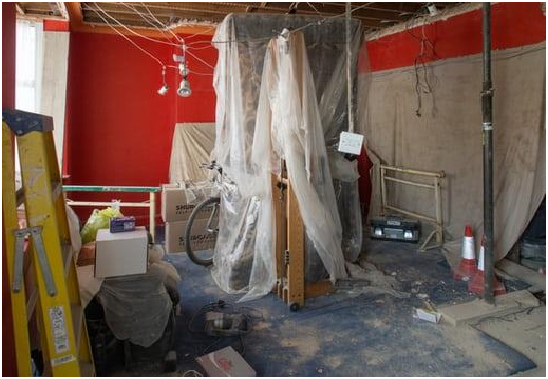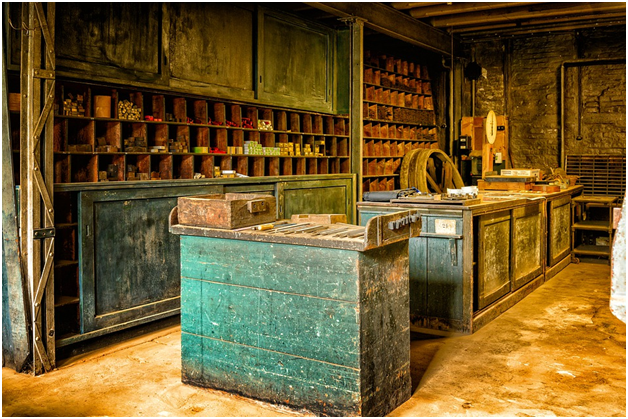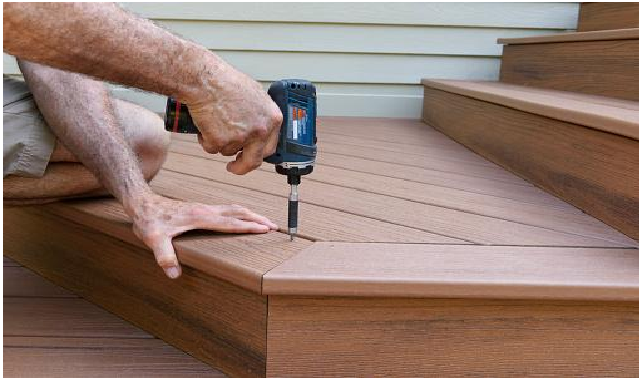
7 Useful tips for Saving the Average Cost of a Basement Remodel
It’s never a smart decision to compromise in manners that disregard construction standards. you’ll just cost yourself cash over the long term. Any basement rebuild work that you’ve done erroneously will either should be fixed or removed before you sell.
In any case, that doesn’t mean you really want to choose the most costly gauge you get. There are a lot of ways that you can conserve your storm basement remodel without forfeiting quality or finish. These are some of the tips provided by a company that provides the best services of basement remodel in Cape Cod.
Table of Contents
1. Settle on a cheap, pre-assembled departure window and well
On the off chance that your basement remodels project requires the establishment of crisis departure windows, it will cost you a normal of $3,750 per departure window.
This gets pretty expensive relying upon the number of departure windows your storm basement needs. As per the IRC Emergency Escape and Rescue Requirements (R310.1), a completed storm basement that is one enormous, open living space requires one departure window. Be that as it may, assuming you’re adding any rooms in your storm basement rebuild, everyone is expected to have its departure window.
While the public normal is near four thousand, this is to some extent since property holders regularly need to introduce custom departure windows that reflect the materials and plan of the house.
In any case, as long as your departure windows are situated as an afterthought or back of your home, they won’t think twice about the control request. Assuming that is the situation, you can bring down costs by buying pre-assembled departure windows.
Pre-assembled departure windows go around $600 to $700, and an economy window well sells for around $500. Include the expense of an establishment that runs as low as possible $900, and you can bring your all-out cost down to around $2,000 per departure window.
2. Test outside dividers for dampness prior to wrapping up
Storm basements have a standing of being sodden, rotten, and stale smelling on purpose. Groundwater from a downpour or softening snow can leak in from the dividers and the floors, and a few houses have inside dampness sources too.

Regardless of whether your basement dividers don’t appear to be soggy, and you’ve never disapproved of form or water harm in your basement, you could run into dampness issues on the off chance that you don’t test for it first.
You can DIY this test with a roll of pipe tape and aluminum foil or cling wrap. Basically tape up a square, leave it for 24 hours, and afterward verify whether it’s clammy. Assuming it’s dry, you’re all set.
On the off chance that it’s gathered any dampness, you want to manage the issue before completing your dividers. Fortunately, dividers that bomb a dampness test, yet feel dry to the touch can ordinarily be fixed with a layer of sealant, similar to brickwork waterproofer for around $100.
For a home that has a significant dampness issue, it’ll cost anyplace between $3,324 – $11,748 to appropriately examine and waterproof your basement, contingent upon the seriousness of the issues.
Try not to surrender to the impulse to paint or drywall over your basement concrete and leave the clamminess be. Buildup and form create inside 24 to 48 hours after water openness. What’s more, assuming you at any point sell your home and the purchaser can demonstrate that you neglected to reveal realized dampness issues in your basement or purposely covered them, they can sue you over it.
3. Remove a few studs
At the point when your basement rebuild plans incorporate adding rooms, similar to an additional room, study, or restroom, you’ll have to hurl a few dividers to separate the space. The standard expense to outline basement dividers runs between $931-$1,781.
Fortunately, these dividers will not be load-bearing. Since these dividers play no part in holding up the house over, perhaps the most straightforward cash-saving tip is by diminishing the number of studs in those dividers.
Load-bearing dividers require studs put each 16 inches, in any case, non-loadbearing consider studs set each 24 inches. In a 8-foot divider, that diminishes your number of expected studs from six to four.
There’s additionally proof that less studs in your dividers will decrease your energy costs by lessening warm connecting. Basically, each stud goes about as at, temperature guide, drawing outside summer hotness and winter cold into your home. The less studs in your dividers, the more energy productive your home will be, possibly diminishing your energy costs by up to 5%.
A stud just expenses between $5 to $7 each, but at the same time, you’re saving money on the work and other development costs. Progresses in outlining won’t simply save you on your rebuild costs, it’ll save money on wood squander which helps the planet.
4. Introduce drop roofs
Invest any energy gazing at office roofs, and you’re presumably consequently switched off at having anything in any way comparative in your home. In any case, excluding them, while you’re restoring your basement is a misstep.

Drop roofs are an extraordinary choice since they give storm basement roofs a completed look, yet permit admittance to plumbing and wiring – and that is the place where your expense investment funds come in.
Most homes with storm basements run plumbing and electrical frameworks under the floors, which is your basement’s roof. In the event that you drywall over your floor joists to make your storm basement’s roof, you’ll have to cut into it each time you want admittance to those lines and wires, except if you add access boards.
Generally speaking, the establishment costs for both are tantamount. Introducing drywall on the roof will run you between $2.25 to $3 per square foot and drop roof establishment runs between $2 to $5 per square foot.
Material expenses are the place where the genuine contrast comes in. Drywall is somewhat economical at $326 to $526 absolute per each 200 square feet. Drop roof tiles and framework rails range somewhere in the range of $1 to $23 per square foot – and you would rather not totally modest out.
“Spend a tad of additional cash for better quality drop roof tiles rather than the exhausting office space tiles. They have a more costly look which can build your completed basement’s additional worth,” prompts Marchesiello.
Originator look tiles don’t need to be costly. While the spotted office tiles run as modest as $.59 per square foot, you can get angled boards for just $1.37 per square foot, or present-day, finished tiles for $1.98 per square foot.
5. Avoid the floor covering and introduce extravagance vinyl tile all things being equal
The rug might be embraced on the floors of comfortable over-the-ground rooms, however, it’s anything but a welcome sight on the floor of storm basement rooms. Since basements are known for their dampness issues, purchasers see basement covering as a favorable place for future issues.
“Certainly don’t cover your completed storm basement. The most ideal sort of ground surface for basement by a long shot is called extravagance vinyl tile, which is a great vinyl board,”
Certain individuals look down on the possibility of vinyl flooring, however, this isn’t your grandmother’s bustling earthy colored vinyl sheet flooring. Extravagance vinyl tile (LVT) is top-of-the-line flooring intended to convincingly imitate the vibe of costly hardwood, stone, or fired tiles while keeping up with the sturdiness of vinyl all at a more reasonable expense. You can get quality wood look LVT evaluated as low as $1.44 per square foot.
In the event that you’d actually prefer to have cover, essentially in the rooms, you’re not all the way in a tight spot. You can introduce a dampness boundary cushioning under your rug to save it new and dry for around $1 a square foot.
6. Add a restroom (or if nothing else a half shower) close to existing pipes
“Any time you add another restroom, or even a half shower, you’re increasing the worth of the property altogether,” says Marchesiello.
Assuming you’re expanding on a washroom as an expansion at over the ground grade, it’s essentially not a savvy project:
An infographic disclosing how to add a washroom to a storm basement.
Source: (Remodeling Impact Report)
Nonetheless, introducing an unobtrusive basement restroom close to existing pipes is substantially more reasonable. For a fundamental 30 to 50 square foot restroom, hope to financial plan around $15,000 overall.
7. Make sure to assign some extra room
Try not to get out of hand with your basement rebuild project that you neglect its basic role. Storm basements are the great extra room in many homes for assets that aren’t utilized ordinary, similar to occasion stylistic theme, occasional attire, or open-air furniture.
“A typical misstep dealers make is that they flawlessly finish the whole basement without leaving the extra room, which prompts numerous purchasers to leave regardless of how pleasant the storm basement looks. In this way, I advise my dealers to leave no less than 33% of the incomplete space for capacity,” clarifies Marchesiello.
Cutting out an area to leave incomplete for capacity is a gigantic cash saver since it diminishes the area of your remodel. Rather than remodeling your entire 1,500 square foot basement, you can simply fabricate a divider to isolate 500 square feet of the incomplete basement for capacity, and just compensation to complete the excess 1,000 square feet.
Basement Remodeling in Cape Cod
Prior to starting a period and cash escalated basement rebuild project, crunch the numbers to sort out assuming it’s reasonable and productive.
“Except if there’s an obviously characterized plenty of comparables showing that a house with a completed basement will sell for fundamentally [more] cash in your space, then, at that point, don’t burn through cash on completing it just to sell it,” exhorts Marchesiello.
“Be that as it may, once in a while it’s not with regards to the resale esteem. Assuming you truly need a completed basement, make it some portion of your long-term arrangement, so you can appreciate it for quite some time before you sell.”
Assuming you really do conclude that the normal expense of a storm basement rebuild is worth the effort for your home, mess around with it and make a storm basement space for the entire family to appreciate, similar to an in-home theater, a wine basement, or even a rec center





No Comment